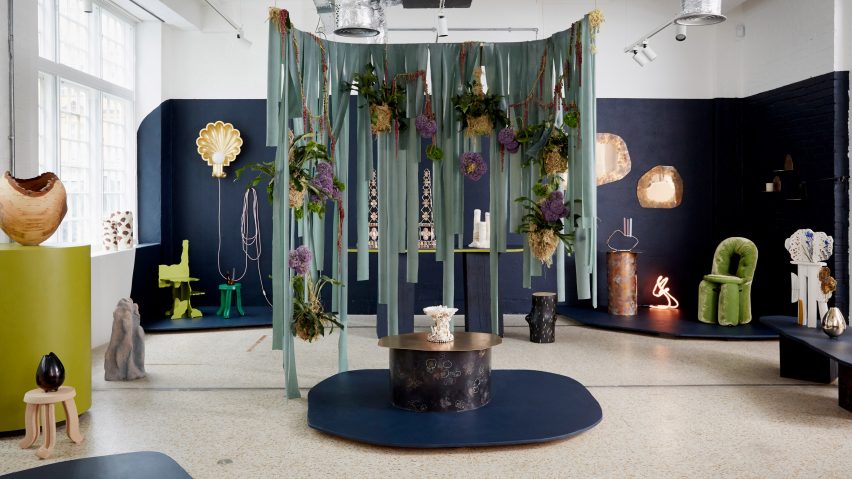
Charlotte Kingsnorth's patinated bronze tables look like they have lichen on them
Industrial designer Charlotte Kingsnorth has created a set of furniture with distinctly patterned surfaces, produced by applying chemicals and pigments to heated bronze.
The collection of tables, mirrors and decorative items is on display at the Mayfair showroom of The New Craftsmen, in a London Craft Week exhibition co-curated by Kingsnorth.
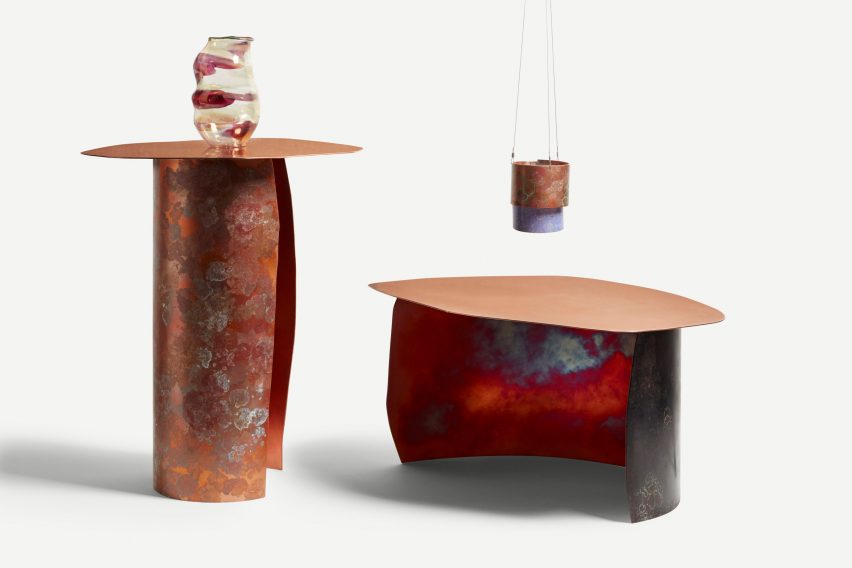
The designer uses a "pioneering new technique" to produce the pieces, which involves applying a selection of corrosive chemicals that you might find in a regular science lab and coloured pigments to bronze to create a "rich and expressive" surface.
Kingsnorth worked closely with a patina specialist to build layers of the chemical compounds by hand.
When the metal is heated and the liquid applied, the chemical reaction causes small decorative patinas to appear on its surface. Kingsnorth modelled the patterns on the organic growth of the lichen that blooms near her studio in southeast London.
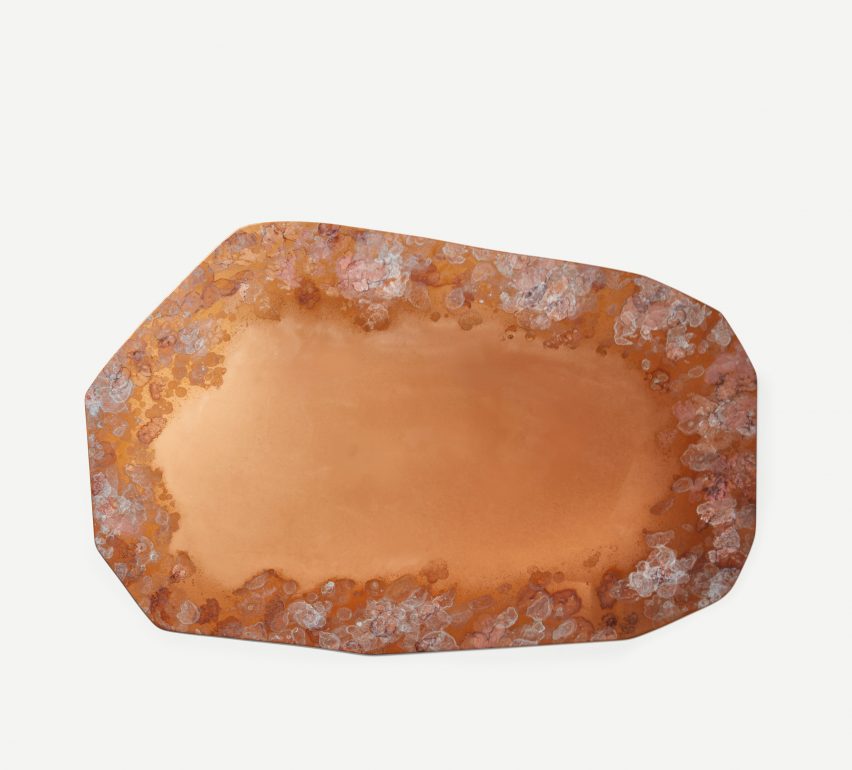
"My goal was to work with patina in a way I hadn't seen before – to play with colour, textures, and create depth on the metal surface," explained Kingsnorth.
"Inspired by the lichen that was growing on a railing near my studio, I embarked on a series of studies exploring its different forms, from leaf-like branches to a cracked powder-like look."
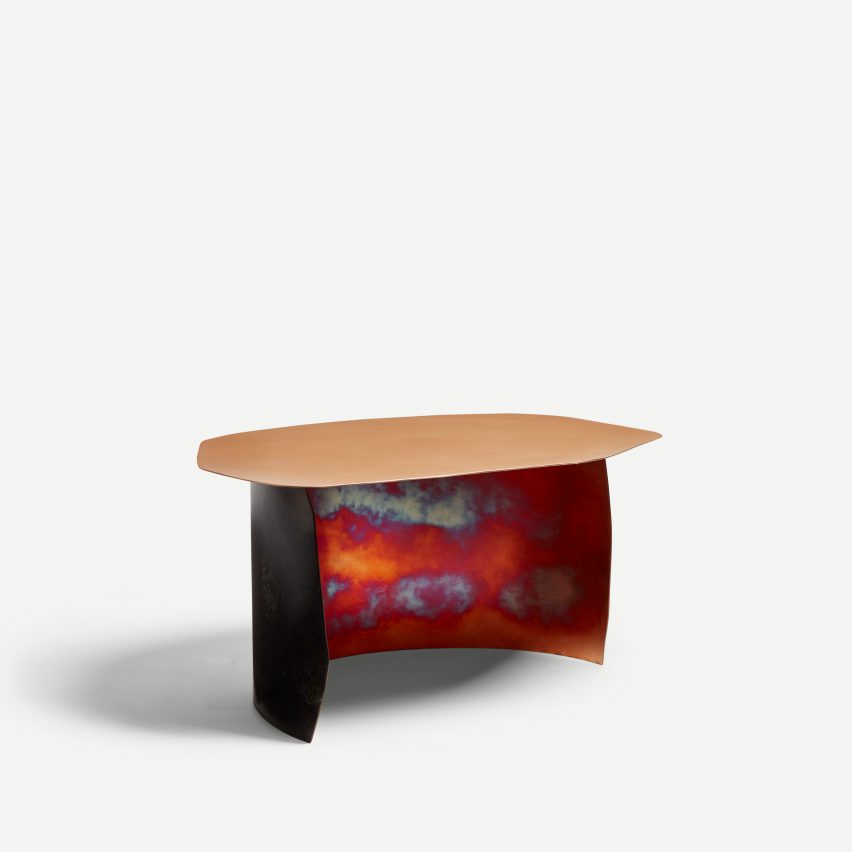
The designer sees a clear relationship between lichen and the process of patination.
"Lichen are formed from a fungus and an algae which are living in a symbiotic relationship. They react with the atmosphere around them, taking in carbon dioxide and expelling oxygen," explained Kingsnorth.
"Bronze is an alloy formed from copper and tin, and like lichen, copper also has a reaction when exposed to the atmosphere around it."
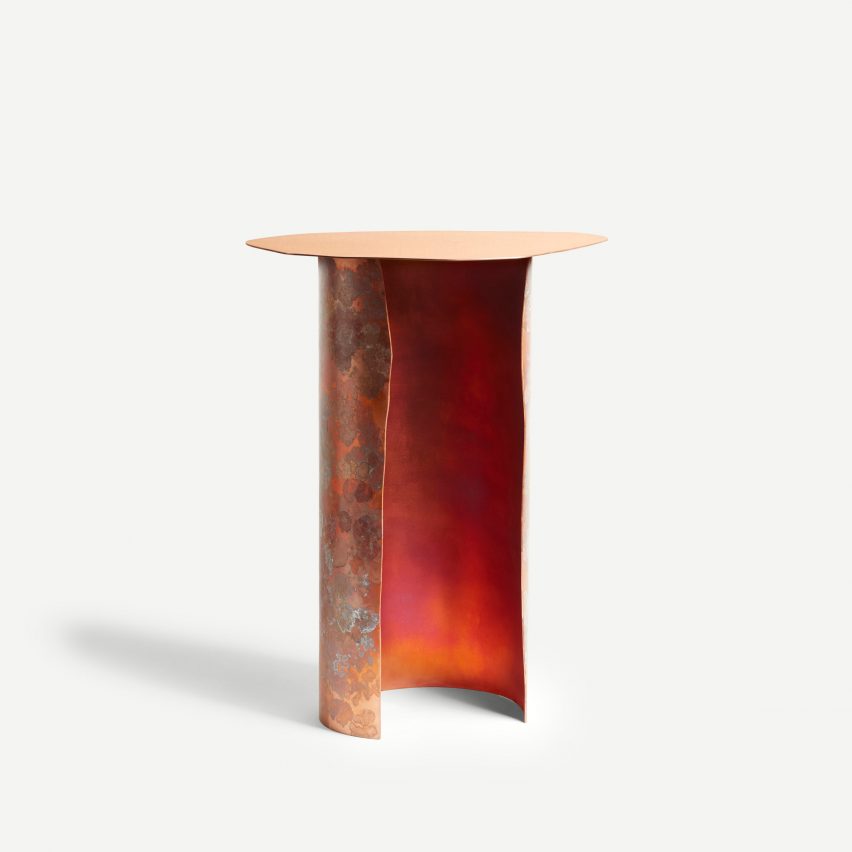
Before applying the surface decoration, Kingsnorth cuts, rolls and solders the bronze into basic archetypal forms, to ensure that the pieces are functional as well as decorative.
She used scrap bronze left over from making tables and mirrors to make the pendant lights, candle holders and sconces.
Other functional pieces in the exhibition include the Jigsaw chair by Max Lamb made from anodised aluminium sections pieced together at right angles, and extruded ceramic stools by Joe Hartley.
"To accompany my work I have co-curated a group of makers who play with themes of rudimental matter and alchemy," explained Kingsnorth. "These artists and designers are making bold work, which cuts through traditional craft techniques and hack into industrial processes as a type of art form."
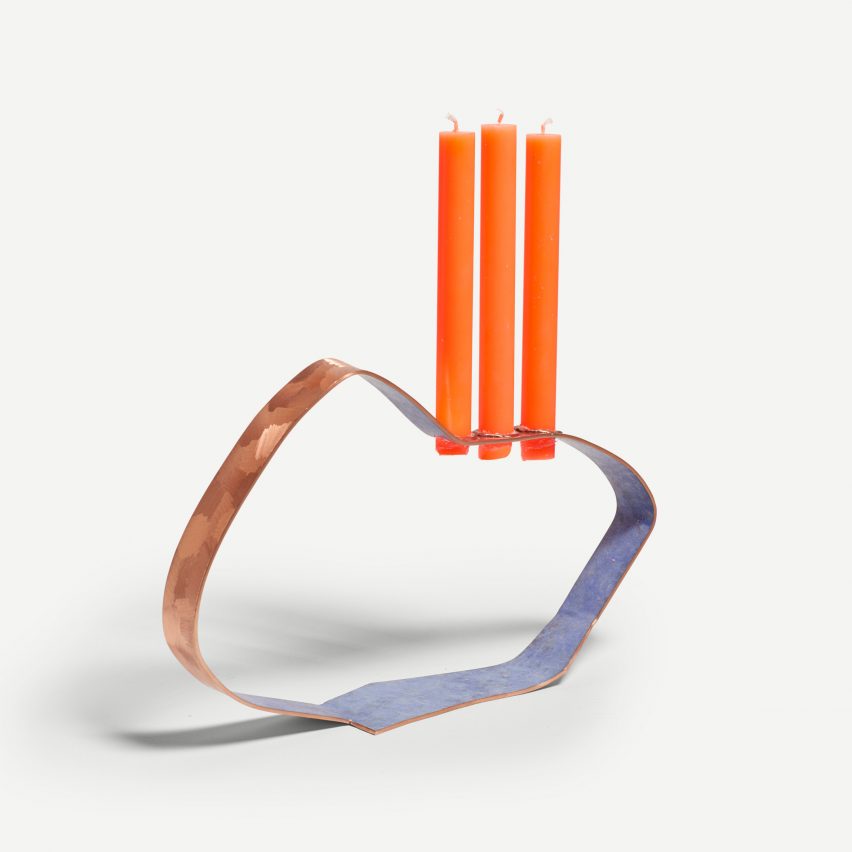
Textile artist duo Paris Essex and shellwork artist Tess Morley are also showing work in the exhibition.
The interior of the showroom has been decorated with hanging strips of sea-green fabric and baskets of foliage, whilst items are presented on and around raised dark blue display platforms.
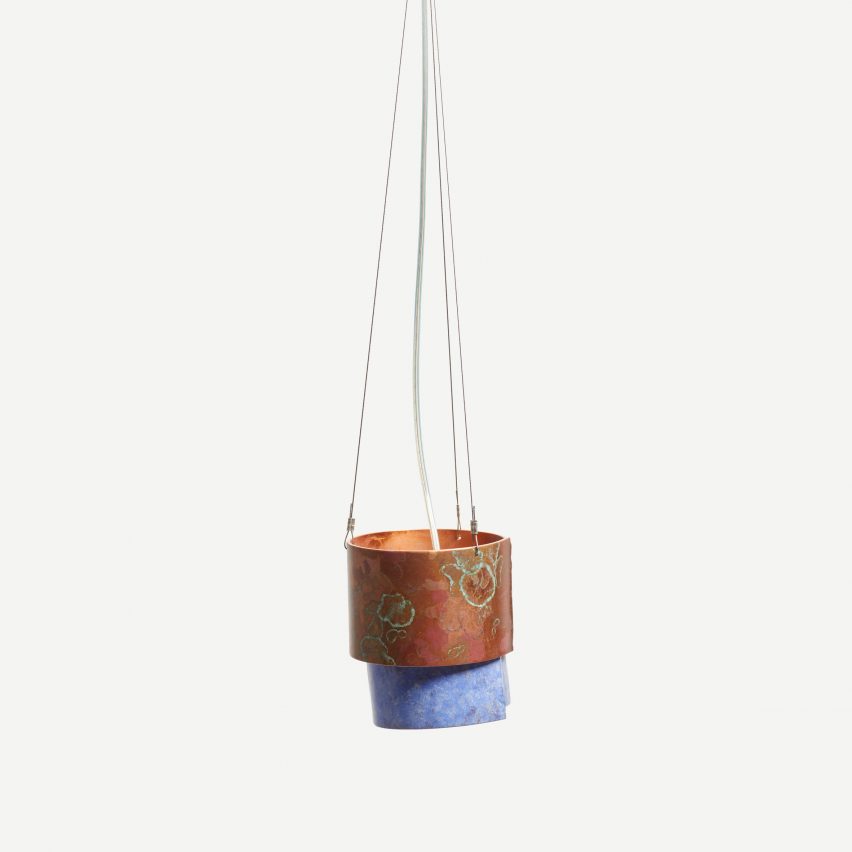
Other shows and events during London Craft Week include a major exhibition at the Fitzrovia Chapel of furniture and objects made using the Japanese technique of shou-sugi-ban, or wood charring, as well as various activities at Coal Drops Yard in King's Cross, such as knife sharpening and fabric dyeing.
The Processing Lichen & Other Matter exhibition runs until 15 June at The New Craftsmen.